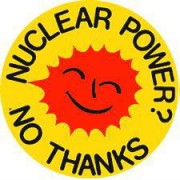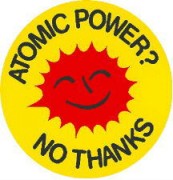IWAKI, Japan – An explosion shattered a building housing a nuclear reactor Saturday, amid fears of a meltdown, while across wide swaths of northeastern Japan officials searched for thousands of people missing more than a day after a devastating earthquake and tsunami.
The confirmed death toll from Friday's twin disasters was 574, but the government's chief spokesman said it could exceed 1,000. Devastation stretched hundreds of miles (kilometers) along the coast, where thousands of hungry survivors huddled in darkened emergency centers cut off from rescuers and aid.
The scale of destruction was not yet known, but there were grim signs that the death toll could soar. One report said four whole trains had disappeared Friday and still not been located. Others said 9,500 people in one coastal town were unaccounted for and that at least 200 bodies had washed ashore elsewhere.
Atsushi Ito, an official in Miyagi prefecture, among the worst hit states, could not confirm those figures, noting that with so little access to the area, thousands of people in scores of town could not be contacted or accounted for.
"Our estimates based on reported cases alone suggest that more than 1,000 people have lost their lives in the disaster," Chief Cabinet Secretary Yukio Edano said. "Unfortunately, the actual damage could far exceed that number considering the difficulty assessing the full extent of damage."
Among the most worrying developments was the possible meltdown of a nuclear reactor near the quake's epicenter. Edano said an explosion caused by vented hydrogen gas destroyed the exterior walls of the building where the reactor is, but not the actual metal housing enveloping the reactor.
Edano said the radiation around the Fukushima Dai-ichi plant had not risen after the blast, but had in fact decreased. He did not say why that was so. He added that pressure decreased after the blast.
Still, virtually any increase in ambient radiation can raise long-term cancer rates, and authorities were planning to distribute iodine, which helps protect against thyroid cancer.
Authorities have also evacuated people from a 12-mile (20-kilometer) radius around the reactor.
The explosion was caused by hydrogen interacting with oxygen outside the reactor. The hydrogen was formed when the superheated fuel rods came in contact with water being poured over it to prevent a meltdown.
"They are working furiously to find a solution to cool the core, and this afternoon in Europe we heard that they have begun to inject sea water into the core," said Mark Hibbs, a senior associate at the Nuclear Policy Program for the Carnegie Endowment for International Peace. "That is an indication of how serious the problem is and how the Japanese had to resort to unusual and improvised solutions to cool the reactor core."
Officials have said that radiation levels were elevated before the blast: At one point, the plant was releasing each hour the amount of radiation a person normally absorbs from the environment each year.
The explosion was preceded by puff of white smoke that gathered intensity until it became a huge cloud enveloping the entire facility, located in Fukushima, 20 miles (30 kilometers) from Iwaki. After the explosion, the walls of the building crumbled, leaving only a skeletal metal frame.
Tokyo Power Electric Co., the utility that runs the Fukushima Dai-ichi plant, said four workers suffered fractures and bruises and were being treated at a hospital.
The trouble began at the plant's Unit 1 after the massive 8.9-magnitude earthquake and the tsunami it spawned knocked out power there, depriving it of its cooling system.
Power was knocked out by the quake in large areas of Japan, which has requested increased energy supplies from Russia, Russia's RIA Novosti agency reported.
The concerns about a radiation leak at the nuclear power plant overshadowed the massive tragedy laid out along a 1,300-mile (2,100-kilometer) stretch of the coastline where scores of villages, towns and cities were battered by the tsunami, packing 23-feet (7-meter) high waves.
It swept inland about six miles (10 kilometers) in some areas, swallowing boats, homes, cars, trees and everything else.
"The tsunami was unbelievably fast," said Koichi Takairin, a 34-year-old truck driver who was inside his sturdy four-ton rig when the wave hit the port town of Sendai.
"Smaller cars were being swept around me," he said. "All I could do was sit in my truck."
His rig ruined, he joined the steady flow of survivors who walked along the road away from the sea and back into the city on Saturday.
Smashed cars and small airplanes were jumbled up against buildings near the local airport, several miles (kilometers) from the shore. Felled trees and wooden debris lay everywhere as rescue workers coasted on boats through murky waters around flooded structures, nosing their way through a sea of debris.
Late Saturday night, firefighters had yet to contain a large blaze at the Cosmo Oil refinery in the city of Ichihara.
According to official figures, 586 people are missing and 1,105 injured.
Prime Minister Naoto Kan said 50,000 troops joined rescue and recovery efforts, aided by boats and helicopters. Dozens of countries also offered help.
President Barack Obama pledged U.S. assistance following what he called a potentially "catastrophic" disaster. He said one U.S. aircraft carrier was already in Japan and a second was on its way.
More than 215,000 people were living in 1,350 temporary shelters in five prefectures, the national police agency said.
Aid has barely begun to trickle into many areas.
"All we have to eat are biscuits and rice balls," said Noboru Uehara, 24, a delivery truck driver who was wrapped in a blanket against the cold at center in Iwake. "I'm worried that we will run out of food."
Since the quake, more than 1 million households have not had water, mostly concentrated in northeast. Some 4 million buildings were without power.
About 24 percent of electricity in Japan is produced by 55 nuclear power units in 17 plants and some were in trouble after the quake.
Japan declared states of emergency at two power plants after their units lost cooling ability.
Although the government spokesman played down fears of radiation leak, the Japanese nuclear agency spokesman Shinji Kinjo acknowledged there were still fears of a meltdown.
A "meltdown" is not a technical term. Rather, it is an informal way of referring to a very serious collapse of a power plant's systems and its ability to manage temperatures.
Yaroslov Shtrombakh, a Russian nuclear expert, said a Chernobyl-style meltdown was unlikely.
"It's not a fast reaction like at Chernobyl," he said. "I think that everything will be contained within the grounds, and there will be no big catastrophe."
In 1986, the Chernobyl nuclear reactor exploded and caught fire, sending a cloud of radiation over much of Europe. That reactor — unlike the Fukushima one — was not housed in a sealed container, so there was no way to contain the radiation once the reactor exploded.
The reactor in trouble has already leaked some radiation: Before the explosion, operators had detected eight times the normal radiation levels outside the facility and 1,000 times normal inside Unit 1's control room.
An evacuation area around the plant was expanded to a radius of 12 miles (20 kilometers) from the six miles (10 kilometers) before. People in the expanded area were advised to leave quickly; 51,000 residents were previously evacuated.
"Everyone wants to get out of the town. But the roads are terrible," said Reiko Takagi, a middle-aged woman, standing outside a taxi company. "It is too dangerous to go anywhere. But we are afraid that winds may change and bring radiation toward us."
The transport ministry said all highways from Tokyo leading to quake-hit areas were closed, except for emergency vehicles. Mobile communications were spotty and calls to the devastated areas were going unanswered.
Local TV stations broadcast footage of people lining up for water and food such as rice balls. In Fukushima, city officials were handing out bottled drinks, snacks and blankets. But there were large areas that were surrounded by water and were unreachable.
One hospital in Miyagi prefecture was seen surrounded by water. The staff had painted an SOS on its rooftop and were waving white flags.
Technologically advanced Japan is well prepared for quakes and its buildings can withstand strong jolts, even a temblor like Friday's, which was the strongest the country has experienced since official records started in the late 1800s. What was beyond human control was the killer tsunami that followed.
Japan's worst previous quake was a magnitude 8.3 temblor in Kanto that killed 143,000 people in 1923, according to the USGS. A magnitude 7.2 quake in Kobe killed 6,400 people in 1995.
Japan lies on the "Ring of Fire" — an arc of earthquake and volcanic zones stretching around the Pacific where about 90 percent of the world's quakes occur, including the one that triggered the Dec. 26, 2004, Indian Ocean tsunami that killed an estimated 230,000 people in 12 countries. A magnitude-8.8 quake that shook central Chile in February 2010 also generated a tsunami and killed 524 people.
http://news.yahoo.com/s/ap/as_japan_earthquake
The confirmed death toll from Friday's twin disasters was 574, but the government's chief spokesman said it could exceed 1,000. Devastation stretched hundreds of miles (kilometers) along the coast, where thousands of hungry survivors huddled in darkened emergency centers cut off from rescuers and aid.
The scale of destruction was not yet known, but there were grim signs that the death toll could soar. One report said four whole trains had disappeared Friday and still not been located. Others said 9,500 people in one coastal town were unaccounted for and that at least 200 bodies had washed ashore elsewhere.
Atsushi Ito, an official in Miyagi prefecture, among the worst hit states, could not confirm those figures, noting that with so little access to the area, thousands of people in scores of town could not be contacted or accounted for.
"Our estimates based on reported cases alone suggest that more than 1,000 people have lost their lives in the disaster," Chief Cabinet Secretary Yukio Edano said. "Unfortunately, the actual damage could far exceed that number considering the difficulty assessing the full extent of damage."
Among the most worrying developments was the possible meltdown of a nuclear reactor near the quake's epicenter. Edano said an explosion caused by vented hydrogen gas destroyed the exterior walls of the building where the reactor is, but not the actual metal housing enveloping the reactor.
Edano said the radiation around the Fukushima Dai-ichi plant had not risen after the blast, but had in fact decreased. He did not say why that was so. He added that pressure decreased after the blast.
Still, virtually any increase in ambient radiation can raise long-term cancer rates, and authorities were planning to distribute iodine, which helps protect against thyroid cancer.
Authorities have also evacuated people from a 12-mile (20-kilometer) radius around the reactor.
The explosion was caused by hydrogen interacting with oxygen outside the reactor. The hydrogen was formed when the superheated fuel rods came in contact with water being poured over it to prevent a meltdown.
"They are working furiously to find a solution to cool the core, and this afternoon in Europe we heard that they have begun to inject sea water into the core," said Mark Hibbs, a senior associate at the Nuclear Policy Program for the Carnegie Endowment for International Peace. "That is an indication of how serious the problem is and how the Japanese had to resort to unusual and improvised solutions to cool the reactor core."
Officials have said that radiation levels were elevated before the blast: At one point, the plant was releasing each hour the amount of radiation a person normally absorbs from the environment each year.
The explosion was preceded by puff of white smoke that gathered intensity until it became a huge cloud enveloping the entire facility, located in Fukushima, 20 miles (30 kilometers) from Iwaki. After the explosion, the walls of the building crumbled, leaving only a skeletal metal frame.
Tokyo Power Electric Co., the utility that runs the Fukushima Dai-ichi plant, said four workers suffered fractures and bruises and were being treated at a hospital.
The trouble began at the plant's Unit 1 after the massive 8.9-magnitude earthquake and the tsunami it spawned knocked out power there, depriving it of its cooling system.
Power was knocked out by the quake in large areas of Japan, which has requested increased energy supplies from Russia, Russia's RIA Novosti agency reported.
The concerns about a radiation leak at the nuclear power plant overshadowed the massive tragedy laid out along a 1,300-mile (2,100-kilometer) stretch of the coastline where scores of villages, towns and cities were battered by the tsunami, packing 23-feet (7-meter) high waves.
It swept inland about six miles (10 kilometers) in some areas, swallowing boats, homes, cars, trees and everything else.
"The tsunami was unbelievably fast," said Koichi Takairin, a 34-year-old truck driver who was inside his sturdy four-ton rig when the wave hit the port town of Sendai.
"Smaller cars were being swept around me," he said. "All I could do was sit in my truck."
His rig ruined, he joined the steady flow of survivors who walked along the road away from the sea and back into the city on Saturday.
Smashed cars and small airplanes were jumbled up against buildings near the local airport, several miles (kilometers) from the shore. Felled trees and wooden debris lay everywhere as rescue workers coasted on boats through murky waters around flooded structures, nosing their way through a sea of debris.
Late Saturday night, firefighters had yet to contain a large blaze at the Cosmo Oil refinery in the city of Ichihara.
According to official figures, 586 people are missing and 1,105 injured.
Prime Minister Naoto Kan said 50,000 troops joined rescue and recovery efforts, aided by boats and helicopters. Dozens of countries also offered help.
President Barack Obama pledged U.S. assistance following what he called a potentially "catastrophic" disaster. He said one U.S. aircraft carrier was already in Japan and a second was on its way.
More than 215,000 people were living in 1,350 temporary shelters in five prefectures, the national police agency said.
Aid has barely begun to trickle into many areas.
"All we have to eat are biscuits and rice balls," said Noboru Uehara, 24, a delivery truck driver who was wrapped in a blanket against the cold at center in Iwake. "I'm worried that we will run out of food."
Since the quake, more than 1 million households have not had water, mostly concentrated in northeast. Some 4 million buildings were without power.
About 24 percent of electricity in Japan is produced by 55 nuclear power units in 17 plants and some were in trouble after the quake.
Japan declared states of emergency at two power plants after their units lost cooling ability.
Although the government spokesman played down fears of radiation leak, the Japanese nuclear agency spokesman Shinji Kinjo acknowledged there were still fears of a meltdown.
A "meltdown" is not a technical term. Rather, it is an informal way of referring to a very serious collapse of a power plant's systems and its ability to manage temperatures.
Yaroslov Shtrombakh, a Russian nuclear expert, said a Chernobyl-style meltdown was unlikely.
"It's not a fast reaction like at Chernobyl," he said. "I think that everything will be contained within the grounds, and there will be no big catastrophe."
In 1986, the Chernobyl nuclear reactor exploded and caught fire, sending a cloud of radiation over much of Europe. That reactor — unlike the Fukushima one — was not housed in a sealed container, so there was no way to contain the radiation once the reactor exploded.
The reactor in trouble has already leaked some radiation: Before the explosion, operators had detected eight times the normal radiation levels outside the facility and 1,000 times normal inside Unit 1's control room.
An evacuation area around the plant was expanded to a radius of 12 miles (20 kilometers) from the six miles (10 kilometers) before. People in the expanded area were advised to leave quickly; 51,000 residents were previously evacuated.
"Everyone wants to get out of the town. But the roads are terrible," said Reiko Takagi, a middle-aged woman, standing outside a taxi company. "It is too dangerous to go anywhere. But we are afraid that winds may change and bring radiation toward us."
The transport ministry said all highways from Tokyo leading to quake-hit areas were closed, except for emergency vehicles. Mobile communications were spotty and calls to the devastated areas were going unanswered.
Local TV stations broadcast footage of people lining up for water and food such as rice balls. In Fukushima, city officials were handing out bottled drinks, snacks and blankets. But there were large areas that were surrounded by water and were unreachable.
One hospital in Miyagi prefecture was seen surrounded by water. The staff had painted an SOS on its rooftop and were waving white flags.
Technologically advanced Japan is well prepared for quakes and its buildings can withstand strong jolts, even a temblor like Friday's, which was the strongest the country has experienced since official records started in the late 1800s. What was beyond human control was the killer tsunami that followed.
Japan's worst previous quake was a magnitude 8.3 temblor in Kanto that killed 143,000 people in 1923, according to the USGS. A magnitude 7.2 quake in Kobe killed 6,400 people in 1995.
Japan lies on the "Ring of Fire" — an arc of earthquake and volcanic zones stretching around the Pacific where about 90 percent of the world's quakes occur, including the one that triggered the Dec. 26, 2004, Indian Ocean tsunami that killed an estimated 230,000 people in 12 countries. A magnitude-8.8 quake that shook central Chile in February 2010 also generated a tsunami and killed 524 people.
http://news.yahoo.com/s/ap/as_japan_earthquake




